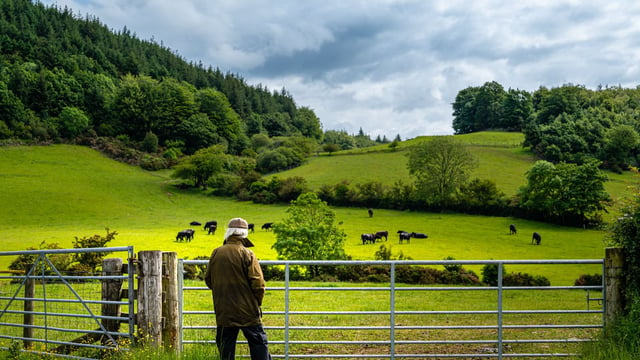What to consider when organising a timber sales contract
Teagasc recently launched a series of factsheets aimed at providing additional supports to forest owners who are selling timber.
Following damage caused to plantations due to recent storms, many owners are now selling timber sooner than they expected.
A completed assessment based on satellite imagery after storms Darragh and Éowyn confirmed that 26,050ha of forestry had been impacted.
Teagasc said care must be taken that at each point in the sale of timber, adequate measuring, recording and supervision is done from before the harvest to the point where timber is delivered to its market destination and is paid for.
“It is important that owners are directly involved in selling timber from their forests, even if they have a forester involved in the process," Tom Houlihan, acting head of the Teagasc Forestry Development Department, said.
Among the important topics covered by the factsheet series is what forest owners should consider when organising a timber sales contract.
Teagasc has strongly recommended to have an appropriate written contract with anyone involved in timber harvesting and sales in your forest.
The authority added that "verbal agreements are not satisfactory as they can be open to misinterpretation".
If an owner chooses to employ a forester to oversee their timber sale, an agreement should be drawn up setting out what services they will provide and the costs involved.
These services may include support with harvesting-related licence applications, preparing a risk assessment, a site health and safety plan and deciding on how the timber will be sold.
The forester could help with a forest inventory to acertain an estimate of the total timber volume and average volume per tree.They can also assist in securing written quotes from a number of potential buyers. If selling roadside or delivered to the buyer, Teagasc advised owners to get quotes from harvesting contractors and hauliers.
Teagasc reminded forestry owners that it is their responsibility to ensure that the conditions of the felling licence and the Health and Safety at Work Act are adhered to.
Teagasc said that a legally binding sales contract with a forester, buyer or harvesting contractor should be carefully considered to ensure the owner's interests are protected.
A solicitor should be asked to give their professional advice on any contract drawn up.
The factsheet advises that these timber sales contracts should include the following detail:
- Your identity as the seller and proof of ownership of the timber as well as contact details of the buyer;
- Location of the site, relevant site features, area to be harvested and the start and finishing dates;
- The price to be paid, including an agreed deposit, payment schedule and when the transfer of the timber ownership occurs;
- Method of measurement (volume (m³) or tonnes) and the categories of products (pulp, stake, pallet and sawlog);
- Agreement on road use, including maximum weights;
- Statement that harvesting will be carried out in accordance with best silvicultural practice and in compliance with the conditions of the felling licence, including the application of urea and dye on freshly cut conifer stumps;
- Written proof that the buyer, their employees/contractor are fully compliant with, and are aware of their responsibilities under the Health & Safety at Work Act as well as written proof of operator's/contractor’s insurance cover and qualifications.
- Assign liability for property damage, including roads;
- Provision for the protection of the residual stand with penalties for unnecessary felling and damage;
- The maximum length of time timber is left at roadside and the associated penalties imposed due to moisture loss if sold by weight;
- Use of a “docket system” or other appropriate systems and designate times when timber lorries can enter the site;
- Provide for the termination of the sales agreement if any of the provisions of the contract are not adhered to with arbitration in the event of disputes between parties.
Teagasc noted that the Irish Timber Growers Association (ITGA) has also developed a ‘Tree Sales Agreement’ guide for forest owners.
Some foresters or companies offer a package including harvest, transport and selling timber, with management costs generally charged as a percentage of the net timber value.
Forest owners should ensure the terms of such a package are covered under an appropriate contract.
The factsheet also suggests other factors to consider when organising a timber sales contract:
- Who is buying the timber?
- What prices are being offered by the end user?
- What costs are involved?
- What are the responsibilities of the forester/forestry company?;
- What are the tax implications?
- On clearfelled sites, there is an obligation under the 2014 Forestry Act to replant. Some foresters/forest companies may offer a replanting contract. If you wish to avail of this, be fully aware of the conditions of the contract.
Teagasc said that its forestry advisers continue to be available to provide objective guidance and support to forest owners on all forestry issues.





